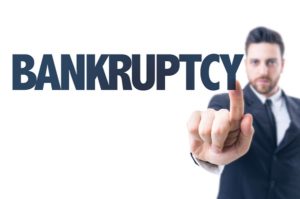
Bankruptcy is actually becoming a significant part of the “typical” American’s adult experience. It’s fairly normal – if there is such a thing. But we still have questions when it’s our turn to file for bankruptcy.
Most ask about their ability to keep their home or their car during bankruptcy. But others have similar, but substantially different concerns regarding keeping property that they purchased through lease-to-own companies even though they are filing. As long as the filing is a Chapter 13 bankruptcy, there’s not a lot of cause to fear the loss of any property. As long as you continue to make the payments to the bankruptcy court as agreed in the Chapter 13 reorganization plan, bankruptcy petitioners will keep most or all of their assets and their creditors will not be able to take any of them back or “repossess” them. Consider the basic setup of the Chapter 13.
The Chapter 13 bankruptcy is known as the reorganization bankruptcy because debtors create a monthly payment plan for their debt over a designated time period (ranging between 36 and 60 months). The bankruptcy trustee for the case receives the monthly payment and then distributes it amongst the petitioner’s creditors. When setting up your own reorganization plan, you have two choices for a lease-to-own account. First, you can decide to keep making payments directly to the lender in accordance with the same loan terms in place at the time you filed (interest rate, payment, etc.) As long as you are making your payment, the lender cannot repossess the item/s. The second option is to include the account in your reorganization plan so that the account’s payment is included in the monthly payment you send to the Chapter 13 bankruptcy trustee. The trustee distributes the monthly payment to all the lenders included in the bankruptcy. The loan balance will be paid according to a fixed monthly payment throughout the term of the Chapter 13. Including it in the bankruptcy usually means a much lower interest rate/payment amount, which can be useful for monthly cash flow purposes.
The challenge is choosing the right option in your particular situation. It’s also important to keep in mind that a significant number of Chapter 13 bankruptcies fail. If the account is included in the Chapter 13 reorganization plan and the Chapter 13 fails, the lender may not allow you to get caught up on the loan. They may decide to repossess the item instead as you are not adhering to the original terms of the contract (and no longer protected by bankruptcy as your Chapter 13 failed). If you decide to pay the lender directly and the Chapter 13 fails, the lender probably won’t notice so long as they’re receiving their on time payment.
You can see how it can be tricky to determine which method to embrace even on a case-by-case basis. If you need assistance determining how to arrange your list of creditors for your Chapter 13 bankruptcy, please get in touch with one of the experienced southern California bankruptcy attorneys at Westgate Law.
